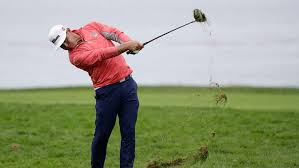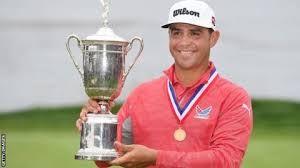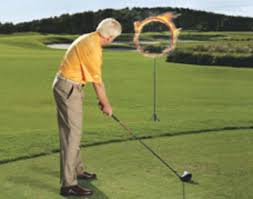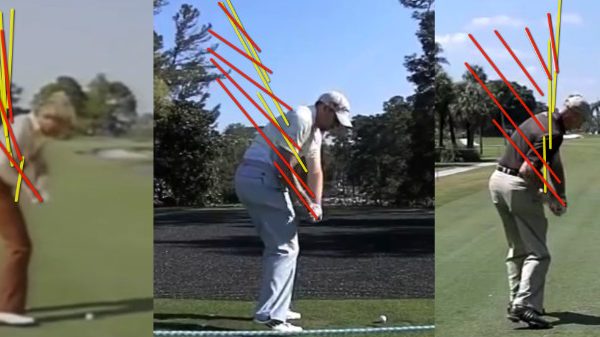I found this article with a startling heading: Mickelson Won’t Win US Open, and here’s why. It was a Morning News blog by JIM NELFORD (AS TOLD TO GARY VAN SICKLE) | June 6, 2019. This was a very convincing heading and I had to figure out why. As it turn out it was about Draggers and Throwers. What’s that?
Pebble Beach is a ball-striker’s paradise. It has the smallest greens on the PGA Tour and it is usually windy from its perch overlooking the Pacific Ocean. Those two things mandate precise ball-striking. As it turn out the US Open was played under very calm and saggy conditions and of course we know that Phil did not win but why was Nelford’s prediction so adamant?
Precise Ball-Striking is exactly what we all want. So if there is a way to improve our swing for a consistent way to play golf, we better get to the bottom of this. The Article States: There are two categories of players on the PGA Tour:
Draggers: Those who drag a square clubface through impact using their lower bodies. Draggers are better, more consistent ball-strikers. “A dragger is like a baseball hitter. The batter drags the bat through the impact area while the lower body rotates. Like DRAGGER golfers, batters don’t roll their forearms or wrists until after they hit the ball.”
Throwers: Those who throw the clubface in an effort to get it square at impact, using their hands, arms and shoulders. Nelford/ Gary Van Sickle estimate that throwers make up 90 percent of Tour players because that’s the only method being taught. “A thrower rotates his forearm hard through impact. It’s a flashing move that makes the clubface turn quickly in order to reach the square position at impact. This move is an effort to compensate for flaring the clubface open during the backswing and getting it out of position. Throwing the clubface back to square before impact requires meticulous timing. The throwers include the late Arnold Palmer, Phil Mickelson and most other players.”
Throwers are taught to stop the lower-body rotation during the forward swing – it’s called hitting up against the left side – so the centrifugal force of the body’s rotation helps throw the clubface back into position before impact. It’s a difficult thing to get right every time.
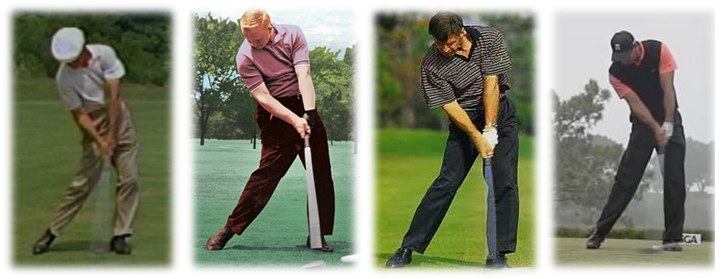
Jack’s hip are not open at impact and it also looks like Hogan, Faldo and Woods have the same move. They are all Draggers!
Jack Nicklaus dragged his club through impact. So did Lee Trevino, Johnny Miller and Paul Azinger among the previous generation. Among today’s stars, Dustin Johnson, Rory McIlroy, Jim Furyk and Zach Johnson are draggers. Brooks Koepka and Tiger Woods, the men who won the first two major championships this year, mix the two styles. And as it turned out Gary Woodland must be a dragger too.
In summary Throwers are upper-body players where the upper body catches up to the early hip rotation and Draggers are lower-body players where they rotate the hip and arms together through impact. Whether you are a Dragger (for more consistent ball striking) or Thrower, you need to practice with your GOLFSTR+ for a straight leading arm swing. Buy one today at www.golfstr.com


